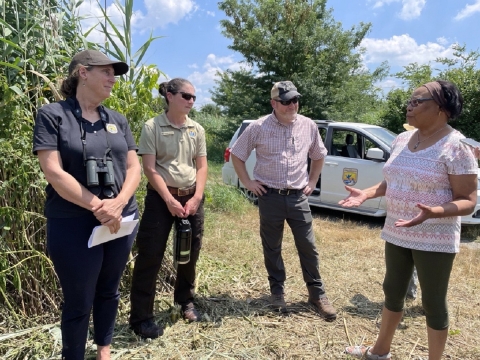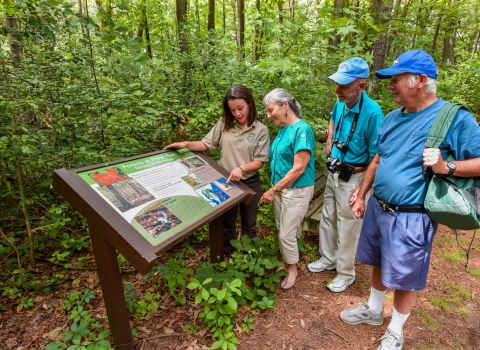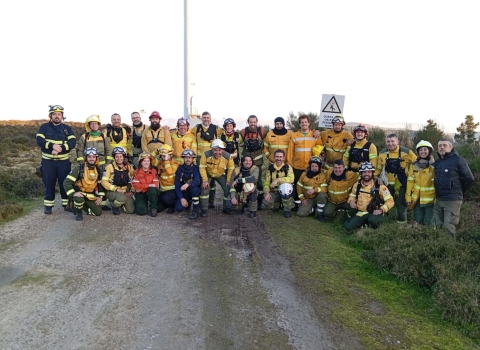In the height of summer, Henderson Marsh at John Heinz National Wildlife Refuge in Philadelphia looks like a healthy sea of green vegetation. But an aerial view of the marsh in winter -- when the vegetation has died back -- reveals an underlying problem. Because of historical tidal restrictions, there are no natural channels to let water move freely through the system, the largest freshwater marsh in Pennsylvania.
That’s why our National Fish Passage Program is investing $900,000 from the Bipartisan Infrastructure Law Bipartisan Infrastructure Law
The Bipartisan Infrastructure Law (BIL) is a once-in-a-generation investment in the nation’s infrastructure and economic competitiveness. We were directly appropriated $455 million over five years in BIL funds for programs related to the President’s America the Beautiful initiative.
Learn more about Bipartisan Infrastructure Law to help restore Henderson Marsh by reconnecting 150 acres that are currently tidally restricted to Darby Creek, a tributary to the Delaware River, and dredging or excavating 13,000 feet of new or enhanced tidal channels.
This week, U.S. Fish and Wildlife Service Director Martha Williams visited the marsh with Service staff and representatives from Ducks Unlimited and the Eastwick United Community Development Association – two of the many partners making the restoration project possible. Touring the marsh both on foot and by kayak, Director Williams learned more about how this historic investment will make both the marsh and the neighboring communities healthier and more resilient to future change.
“As we looked out on the marsh today and the restoration projects that we have done here at this refuge and elsewhere, it shows the incredible power of nature to heal itself and restore if we give it a chance,” Director Williams said.
By restoring tidal connectivity and hydrology, the Henderson Marsh project will give fish such as American shad and blueback herring access to this oasis of habitat in the heart of Philadelphia, prevent flooding damage to the surrounding communities, and expand recreational opportunities for kayaking and fishing at the refuge.
Free-flowing waters enabled through projects supported by the National Fish Passage Program provide clean drinking water, recreational and commercial fishing opportunities, and jobs in industries such as construction and recreation, as well as reduce the danger and costs associated with dam and culvert related-emergencies.
In the last two fiscal years, Service staff have worked with partners to remove 121 barriers, reconnect 829 river miles, and restore access to 18,626 acres of wetland in the Northeast. Studies have shown that each mile of river opened so fish can move freely can contribute more than $500,000 in social and economic benefits, such as recreational fishing and tourism.
With a total of $200 million in investments in the National Fish Passage Program over the next five years, the Bipartisan Infrastructure Law will bolster efforts to address outdated, unsafe or obsolete dams, culverts, levees and other barriers fragmenting our nation’s rivers and streams, which will help restore fish passages and aquatic connectivity.










